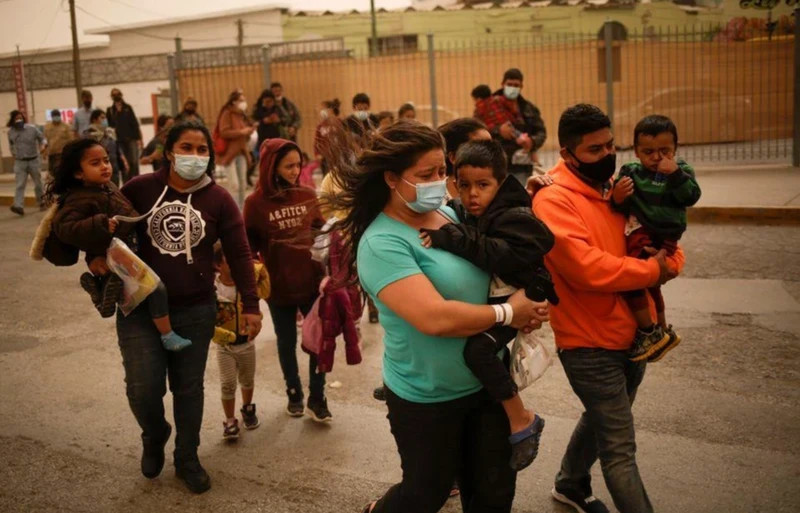Mexican officials said at least 10 migrants were killed and 25 injured when the truck carrying them overturned in the early days of October. The tragic accident occurred in Chiapas state, southern Mexico, near the border with Guatemala. Sadly, the unfortunate victims were all women and children. A few days earlier, two migrants died when the truck carrying them also crashed in Chiapas state.
Since the beginning of the year, Mexican authorities have discovered dozens of trucks carrying illegal migrants transiting the country. Most of the vehicles carrying migrants are operated by criminal human trafficking organisations and often cram dozens to hundreds of people into tightly covered trunks, threatening the lives of migrants.
At the end of September this year, about 1,800 migrants were stranded in the harsh desert of Chihuahua state, northern Mexico, when the freight train that they hopped on stopped suddenly for unknown reasons. Stranded migrants, mainly from Venezuela and Central American countries, desperately boarded ships with the hope of reaching the "promised land", to escape poverty and conflict.
In addition, about 1,000 other illegal migrants who boarded a cargo ship were stranded in abandoned land in Zacatecas state, central Mexico, while in the southern state of Chiapas, thousands of other migrants are waiting for the Mexican authorities to permit them to travel north. The Mexican government said the number of migrants illegally crossing the border into the country has increased dramatically. In particular, Mexican authorities arrested more than 189,000 people in September alone.
The Panamanian government said that since the beginning of the year, the number of migrants seeking their way to the US, by venturing through the Darien Gap Jungle, has skyrocketed by more than 400,000 people. This number is 62% higher than the number of migrants trying to cross this forest, connecting Panama with Colombia, in the whole of 2022. The Ministry of Public Security of Panama estimates that up to 4,000 people per day, mostly from Venezuela, Haiti, Ecuador and Colombia, crossed the dangerous Darien Gap Forest.
Known as one of the most dangerous places in the world, the Darien Gap Forest, with a length of 265 kilometres, is the "main corridor" for migrants from South America to the US, because this is a shorter route than the sea route and the cost is also lower. On the journey through the Darien Gap Forest, migrants always face many dangers from poisonous snakes, wild animals, dangerous terrain, and robber groups. The flow of people trying to cross the Darien Gap is so large that Panama had to set up assistance centres for migrants in many areas across the country while applying tough measures to deport illegal immigrants.
Faced with this painful situation, the US and Mexico are committed to efforts to address the root causes of the growing migration wave. During a meeting with Mexican counterpart Alicia Barcena, US Secretary of State Antony Blinken affirmed, that the two neighbouring countries will find ways to ensure economic security for Central American countries, where violence, poverty and natural disasters are forcing many people to evacuate. Alicia Barcena stated that Mexico is trying to support the repatriation of migrants to Ecuador, Venezuela and Colombia, besides deportation flights to three Central American countries, including Guatemala, Honduras and El Salvador.
In addition, the US, Colombia and Panama also reached a general agreement to resolve the migrant issue, by creating legal and flexible pathways for thousands of migrants and refugees. Among the measures committed by the three countries, the coordination investment plan to reduce poverty and create jobs for communities, on the border of Colombia and Panama, has been highly appreciated by the international community, considering it an effective solution to address the root cause of illegal migration.
















